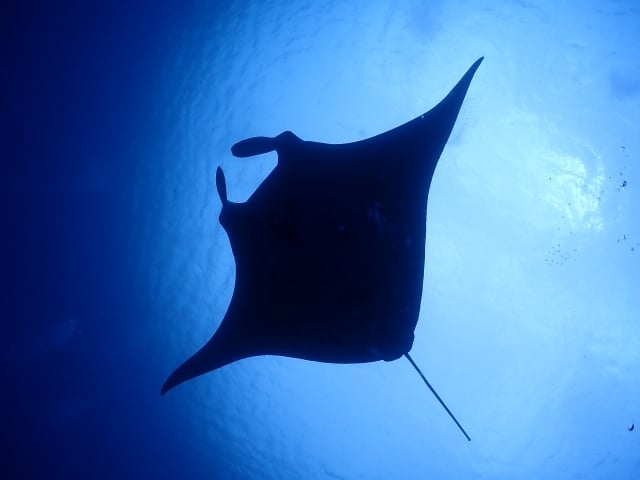Ishigaki Island, a popular tourist destination in Okinawa Prefecture, is an island with very attractive blue sea and blue sky, and many people visit every year to snorkel and dive.
On the coast of Ishigaki Island, coral reefs are well developed, and on the southwest side of the island, there is a coral reef group called Sekiseisho Lake, which is very colorful and full of corals and fishes, so it is very worthwhile to dive.
Ishigaki Island also has one of the world's best cleaning stations for manta rays, and the high encounter rate with manta rays throughout the year makes it a popular diving spot.
Some diving enthusiasts may be wondering, "when is the best season to dive in Ishigaki Island?"
As it turns out, Ishigaki Island has a subtropical oceanic climate with little temperature difference and high water temperature throughout the year, so you can enjoy diving all year round.
However, the underwater world changes with the seasons, so the scenery you can see changes depending on the time of year.
To put it simply; all seasons are the best diving seasons in Ishigaki. In this article, we will introduce the seasonal highlights of Ishigaki Island.
January to March|Kobushime spawning
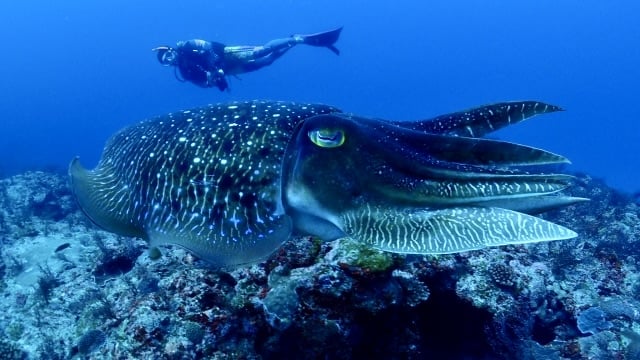
・Water temperature: 18-23°C
January to March is the coldest season in Ishigaki Island.
You need to be prepared for the cold weather, but you can enjoy the clear and beautiful ocean because the clarity of the ocean increases and the encounter rate with migratory fish and big fish increases when the water temperature is low.
In February, you can see the big cuttlefish called kobushime begin to spawn.
In March, the sea is filled with soft light that reminds us of the coming of spring, and young fish begin to swim. This is the time when the area becomes more and more lively.
During this season, manta rays come to the surface to feed on the plankton on the surface of the water. This is a unique way to encounter manta rays during this season.
Compared to summer, the number of divers is much less and the clarity of the ocean is high, so it is the recommended time for those who want to take good pictures while relaxing and having fun.
April to June|Fantastical coral spawning
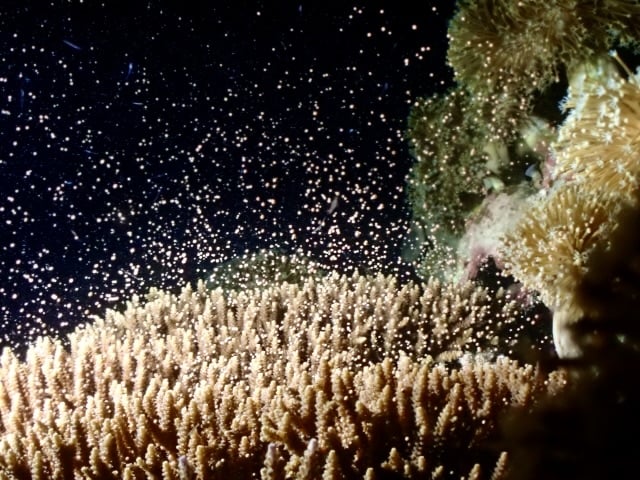
・Water temperature: 23-27°C
From April to June in Ishigaki Island, it becomes a summer day when the sun comes out and it is less cold.
Inside the sea is a rush of new life.
The main highlight of this time of year is the coral spawning, which varies depending on the conditions, but usually occurs around the full moon in May to June.
It is worth visiting Ishigaki Island to see this very fantastic scenery.
Not only corals but also various kinds of juvenile fish are born, and the sea is filled with new power of life, attracting divers.
The rainy season usually ends after mid-June in Ishigaki Island. Although it is the rainy season, it doesn't rain all the time and the number of divers is still calm compared to summer, so you can enjoy diving at a relatively slow pace.
July to September|Manta ray encounters
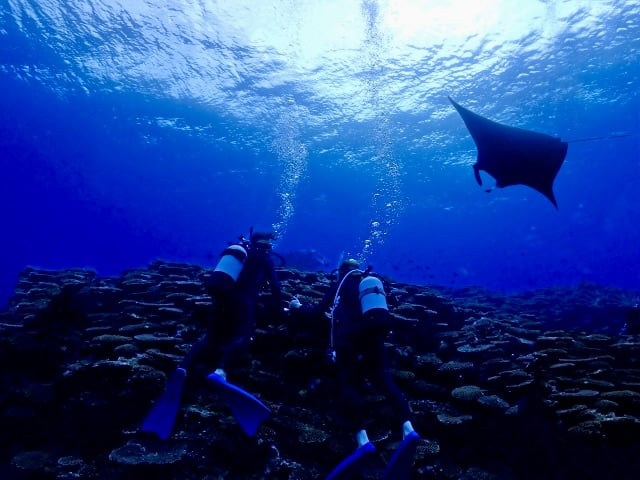
・Water temperature: 27~29℃.
July to September in Ishigaki Island is the on-season for diving in the whole Okinawa Prefecture. Many people visit every year for diving.
The sea of Ishigaki Island in summer shines with sunlight and shows beautiful scenery to divers.
The weather is good and the sea condition is stable, so it is possible to go to the points that are not accessible in winter season.
It is also the top season for manta rays, which are the main attraction of Ishigaki Island's ocean. If you want to see manta rays, visit Ishigaki Island from July to September because you have a high chance of seeing them.
The point to note is ultraviolet rays during this season. The ultraviolet rays in Ishigaki Island are very strong, so be sure to take sunburn protection measures.
October to December|Large migratory fishes
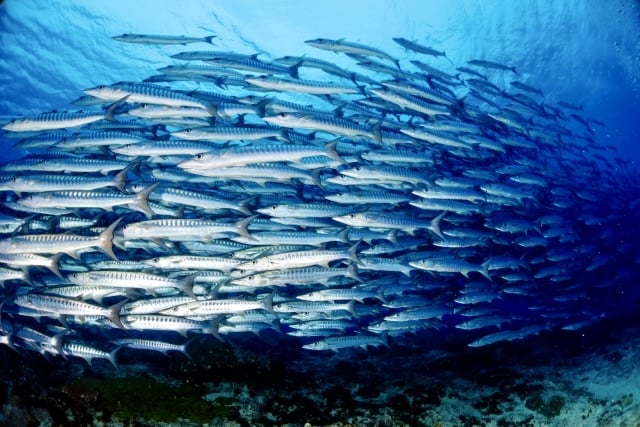
・Water temperature: 23-27°C
October to December in Ishigaki Island is the time when the summer has passed and the temperature and water temperature are dropping.
After October, the dive sites become limited due to the north wind. Although it is still the season to see manta rays, there will be days when you cannot go to manta ray sites depending on the weather.
However, as the water temperature drops, the probability of seeing large migratory fish, such as dogtooth tuna and barracuda increases.
After the on-season of summer, the number of divers is decreasing and the clarity of the sea is improving, so it is the recommended time for those who want to take their time to take pictures, dive leisurely, and encounter large migratory fish.
Make great memories in the ocean of Ishigaki Island!
As you can see, Ishigaki Island, a popular tourist destination in Okinawa Prefecture, is a great diving spot where you can see manta rays all year round.
Other than manta rays, other sea creatures are also very attractive, and coral reefs are also worth seeing.
Just looking at the colorful world of fish living with coral reefs is sure to heal your heart.
Depending on the season, the creatures you can see and the world in the sea varies, so please come and take a peek inside the sea of Ishigaki Island, not just once, but many times!

